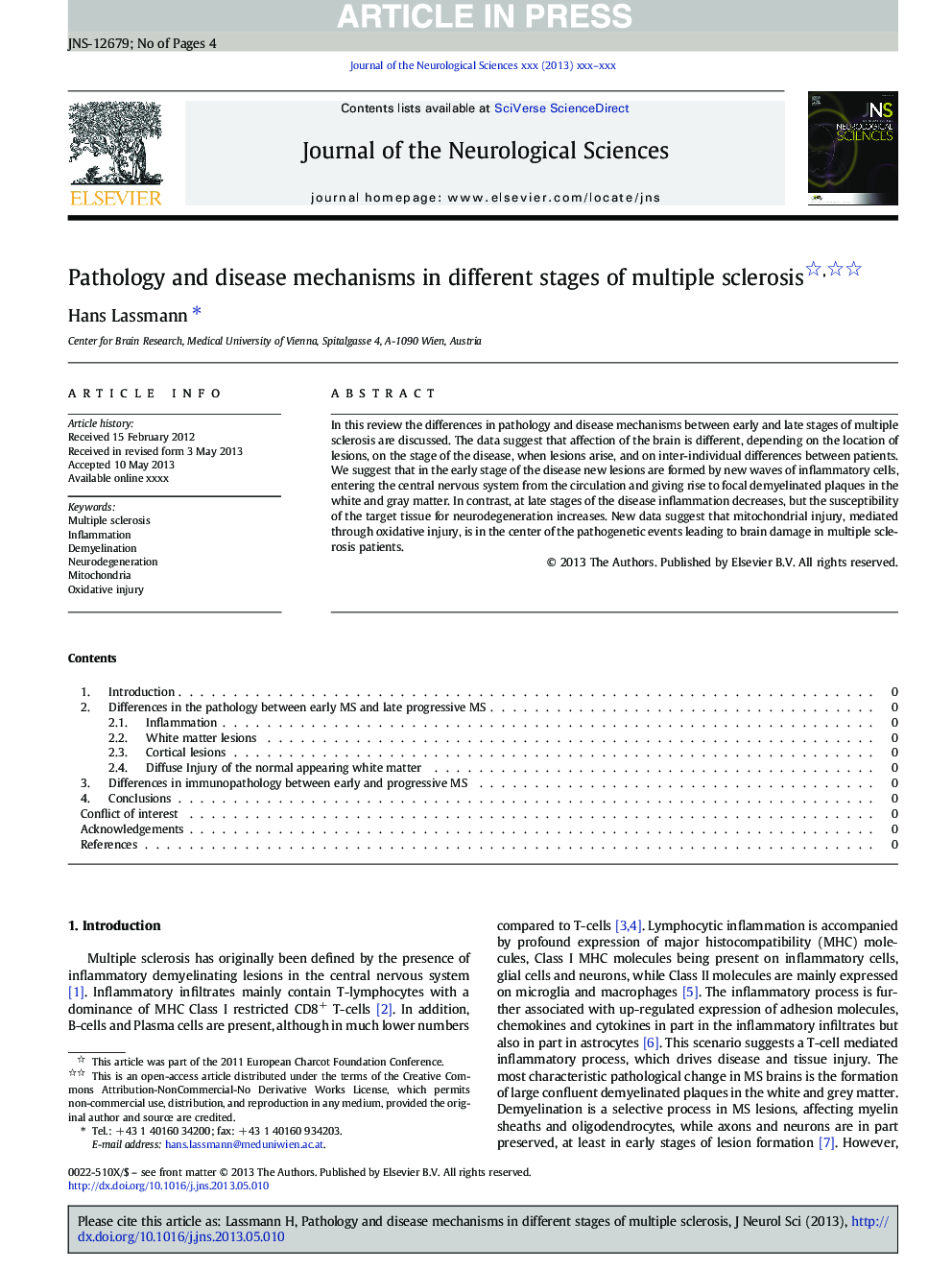| Article ID | Journal | Published Year | Pages | File Type |
|---|---|---|---|---|
| 8278943 | Journal of the Neurological Sciences | 2013 | 4 Pages |
Abstract
In this review the differences in pathology and disease mechanisms between early and late stages of multiple sclerosis are discussed. The data suggest that affection of the brain is different, depending on the location of lesions, on the stage of the disease, when lesions arise, and on inter-individual differences between patients. We suggest that in the early stage of the disease new lesions are formed by new waves of inflammatory cells, entering the central nervous system from the circulation and giving rise to focal demyelinated plaques in the white and gray matter. In contrast, at late stages of the disease inflammation decreases, but the susceptibility of the target tissue for neurodegeneration increases. New data suggest that mitochondrial injury, mediated through oxidative injury, is in the center of the pathogenetic events leading to brain damage in multiple sclerosis patients.
Related Topics
Life Sciences
Biochemistry, Genetics and Molecular Biology
Ageing
Authors
Hans Lassmann,
